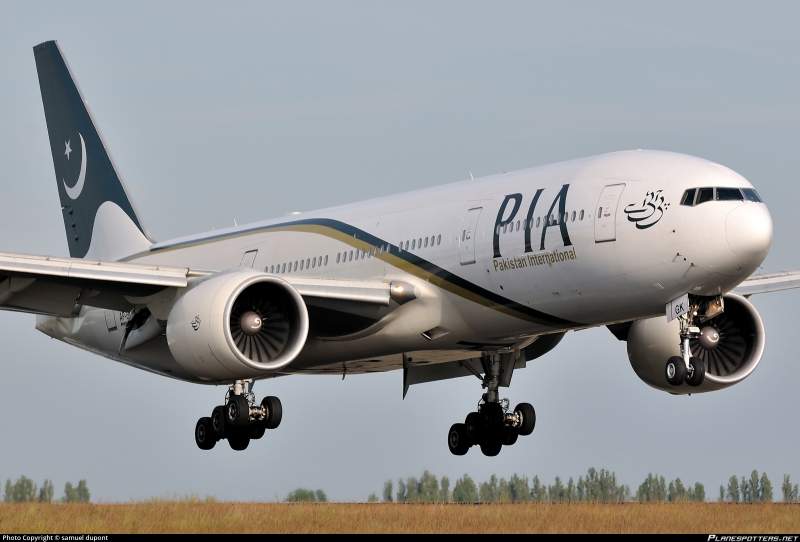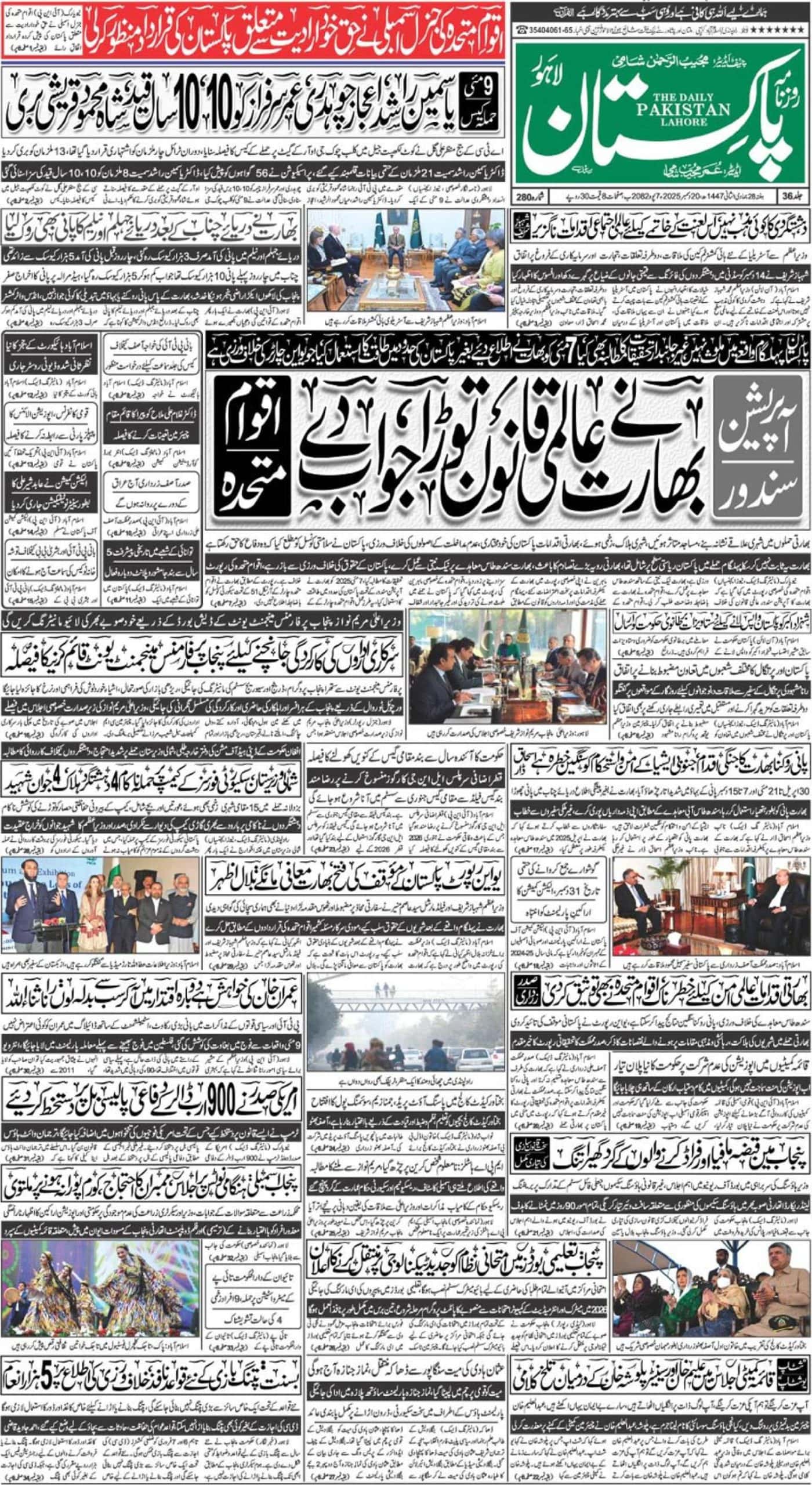Pakistan International Airlines (PIA) during the first nine months of 2017 posted a loss of Rs30 billion. Over the last ten years, PIA has posted accumulated losses exceeding Rs338 billion. Successive governments have failed to bring about a turnaround in the national carrier, as things transitioned from bad to worse, to downright catastrophic. The taxpayer continues to throw cash in the money pit that is PIA, as it saddles on to ever increasing debt to pay its bills, salaries, and pensions.
PIA with a workforce in excess of 14,000 employees has the highest employee-airplane ratio in the world, clearly suggesting that the operating model is inefficient, and certainly not sustainable without taxpayer support. The ratio is almost seven times that of Turkish Airlines. PIA was also ranked as the third worst airline in the world, among 72 international airlines. In order to stop the bleeding of the national carrier, and improve service delivery, it is not only essential to right-size the workforce, but also essential to bring about structural changes which make PIA a leaner and economically sustainable organization.
Over the last 25 years, the country has failed to attract any significant number of tourists, as our neighbours to the East, and other countries in the region have increased tourist footfall by more than 5 times during the same period. During the last 25 years, Pakistan has had one of the lowest growth in tourist spending in the world, despite having awe-inspiring scenery, and a history spanning thousands of years. In addition to a non-conducive law & order scenario, the absence of an efficient and customer friendly national carrier is also to be blamed here.
PIA is a behemoth which needs to be broken down into more palatable businesses, with each business having its own core function, and specialty. The airline needs to be split into four distinct business entities, with an independent Board, and management. The four divisions can be, Budget/Domestic Operations, International Operations, Handling & On-Ground Services, and finally Real Estate Management.
Current State of ‘Greatness’
A review of PIA’s latest financial statements demonstrates that as of Sep-17, PIA had negative equity of Rs280 billion – this basically means that liabilities of PIA are greater than its assets. Accumulated losses of PIA are a mammoth Rs338 billion – the amount being increased by almost Rs88 billion in just two years. As these numbers are slightly dated, the current position would be considerably worse. However, negative equity basically means that ‘book value’ of the company is negative, but that does not mean that the market value is also negative. There is residual worth which can be attributed to its extensive real estate portfolio, a dominant position in the domestic sector, and other intangible factors.
Total liabilities of PIA as of Sep-17 exceed Rs445 billion, and if the trend of the last few years is to be followed, they would have easily crossed half a trillion rupees by now. Similarly, total debt of PIA exceeded Rs200 billion as of Sep, 17 and would be much higher now. Most debt has been restructured, or reprofiled time and again over the years, with no clear strategy of how it will be paid off, or managed, without the support of the Government of Pakistan.
As of Sep-17, PIA had posted a loss in excess of Rs30 billion for nine months, which on an annualized basis would have easily exceeded Rs40 billion. For the year 2018, a loss in the range of Rs40 billion cannot be ruled out, which will most likely be borne by the taxpayer. Despite having a dominant market position in the domestic circuit, perpetual inefficiencies, and a bloated structure ensure that the airlines continue to bleed by billions during the year, proving to be a drain on the national exchequer.
Fixing a mess which costs Rs40 billion to the national exchequer on an annual basis among other inefficiencies requires a major overhaul, and cosmetic measures like shifting headquarters, or deputizing military personnel may only create more problems without addressing the core issue.
Creating a Separate Domestic/Budget Airline
Fixing PIA would necessitate splitting it into four distinct business units, with a core competence. A review of PIA’s revenue breakdown exhibits that almost 78 percent of revenue can be attributed to passengers, of which roughly half is due to domestic travel. During 2016-17, PIA transported more than 4.8 million passengers in the domestic sector, having a market share of 67 percent. However, a number of passengers transported dropped by almost 10 percent in 2017-18 as recurring delays, and the emergence of a new airline encroached on PIA’s market share.
It may also be noted here that domestic air ticket prices in Pakistan are fairly high, compared to India, and other Asian and European markets where budget airlines have taken off. It is estimated that average revenue per passenger for PIA during 2016-17 was Rs10,195 (one-way), which is considerably higher than average revenue in other jurisdictions for domestic or short-haul travel. Excessive taxes on air travel are also to be blamed for higher prices, and lack of competition.
Such a price hampers promotion of domestic travel in the country. Creation of a budget airline would necessitate shifting towards a high volume, low margin business model, with the new outfit operating with a lean operating base. This will not only be a step in the right direction towards creating a self-sustaining outfit but will also promote competition, thereby benefiting consumers. PIA in its current state does not have the wiggle room to increase revenue through higher prices, and the only way to sustainably increase volumes is through higher volumes, by transporting a greater number of passengers.
Tapping the Diaspora & International Tourism
The second key distinct entity would be International Operations, whose primary objective would not only be to facilitate Pakistani diaspora, but also to position Pakistan as an emerging destination for tourism. Pakistani diaspora in the Middle East, Europe, and North America would prefer flying with PIA as long as service quality matches with that of competition, and pricing is competitive. Emirates transported more than 2.2 million passengers in 2017-18 – with multiple flights to and from Dubai, from all major cities of Pakistan.
This is the latent demand that can be captured by PIA. Similarly, consumers always prefer a direct long-haul flight to North American cities, or even Europe – enhancing capacity to improve service delivery on these routes can significantly boost PIA’s international operations. Service delivery improvement would not only require a complete overhaul of the existing fleet, but also of organizational culture.
Ground Handling & Operations
The third entity can handle the ground handling, and other operations, not only for PIA, but also for other airlines operating flights to, and within Pakistan. Such an entity will directly compete with other handling companies, making on-ground handling more efficient, and price competitive. It is estimated that PIA accrues revenue of up to Rs8 billion from such services – which can be increased further as it competes to get a greater share in future.
Real Estate Portfolio
Finally, the fourth distinct entity would be a real estate company, which can be structured as a Real Estate Investment Trust – managing and controlling all real estate of PIA. The national carrier has prime real estate holdings across the world, from the Roosevelt in New York, to La Scribe in Paris. Real estate exposure in various European cities includes shops, and apartments in prime locations which are mostly lying dormant – the same can be activated through efficient management. Similarly, PIA has prime real estate across major cities in Pakistan – the value of which is simply not be recognized anywhere. Ring-fencing real estate in a separate company, being managed by an independent team tasked to enhance real estate yields can unlock the latent value of a massive real estate portfolio.
Considering the prime location of Roosevelt, and La Scribe, it is estimated that the properties can be fairly valued at USD 600k per room – implying a value of USD 600 million for Roosevelt, and USD 128 million for La Scribe, just the cumulative market value of these two properties would be in excess of USD 728 million. Leveraging the same through a separately managed Real Estate Investment Trust would enable PIA to raise finances to plug holes in core airlines business, without losing control of the real estate.
Pipedreams & Beyond
All of this will just be pipedream till efforts are not made to create a nimbler, and cost-efficient structure. PIA currently has payroll costs in excess of Rs35 billion per annum. The same needs to be rationalized for the proposed model to be economically efficient. Providing a golden handshake scheme to trim down payroll costs may incur a one-time significant cost, but will ensure that the Government does not have to provide support to the tune of Rs40 billion (and growing) every year. It’s a bitter pill that needs to be swallowed once, or the losses will keep on mounting further burdening an already stretched fiscal deficit.
A turnaround in PIA requires political will, more than anything else. Delaying the inevitable is only going to hurt more. Ramping up tourism to Pakistan requires the presence of a strong, and friendly national carrier which is self-sustaining. The economic benefits of a reformed national carrier far outweigh the initial costs associated with restructuring, as increased economic activity due to tourism will have a multiplier effect on economic activity in the country. Reforming PIA is a herculean task, but it is certainly not impossible. Aviation in the twenty-first century is poles apart from what it was in the last century – it is time that PIA adapts to an evolved environment, rather than romanticizing the past.














